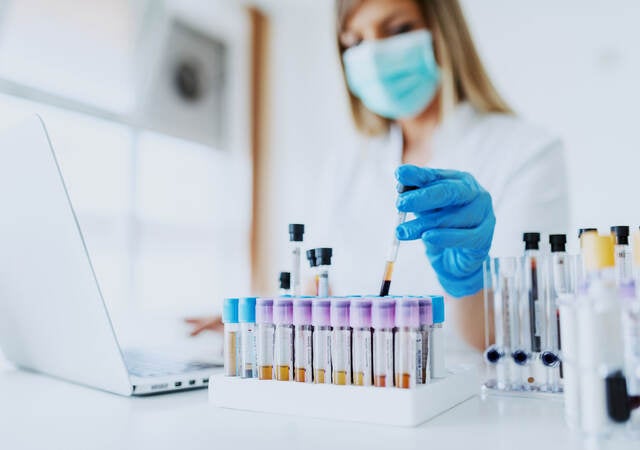October 5, 2022
During a UL Solutions campaign on chemistry capability for electrical and electronic (E&E) products, a particular safety regulation came up repeatedly: California’s Safe Drinking Water and Toxic Enforcement Act of 1986, also known as Proposition (or Prop) 65. Prop 65 requires labels on products that may expose people to chemicals known to cause cancer or reproductive toxicity. While many have heard about Prop 65, they often do not fully understand its full scope. To provide a more thorough overview, we turned to our resident expert on the subject, UL Solutions Chemistry Tech Manager Judith Haber.
Consumer Right-to-Know Law: Understanding Prop 65
Q: Prop 65 became law 36 years ago. Why is it important, and what is its relevance today?
A: Prop 65 is important because it is an exposure law rather than a content law. It doesn’t say that Prop 65-listed chemicals cannot be in consumer products. It does say, however, that if your product contains listed chemicals with significant exposure to consumers, then you must make consumers aware of it. Prop 65 was and is an essential part of helping consumers in California (and health-conscious consumers elsewhere) make informed decisions about their purchases in connection with exposure to harmful chemicals. Prop 65 is relevant today because it continues to inform Californians about health hazards, now covering much more than drinking water, as was its original purpose. Prop 65 covers anything that comes into contact with humans, be it clothing, food, plastic, smoke, water, or the laptop or smartphone on which you’re reading this interview. A Prop 65 warning label may be on a shoe, or it may be on a wall, warning you about harmful chemicals in your immediate surroundings.
Q: Prop 65 protects consumers. Does it also protect occupational users?
A: Yes, Prop 65 protects consumers as well as workers who may be exposed to chemicals on the job. Safe harbor occupational exposure warning methods must be followed in places of business. The term “occupational exposure” is defined as “an exposure to any employee at his or her place of employment.”
Q: What consumer rights are addressed in Prop 65?
A: Proposition 65 contained language in the 1986 ballot initiative that promoted consumers’ rights to:
- Protect themselves and the water they drink against chemicals that are known to cause cancer, birth defects or other reproductive harm.
- Be informed about exposures to chemicals that are known to cause cancer, birth defects or other reproductive harm.
- Secure strict enforcement of the laws controlling hazardous chemicals and deter actions that threaten public health and safety.
- Shift the cost of hazardous waste cleanups toward offenders and away from California taxpayers.
Q: How has Prop 65 evolved since its first harmful chemical list in 1987?
A: The CA Prop 65 legislation requires California to publish a list of chemicals known to cause cancer, birth defects or other reproductive harm. The original list was published in February 1987 and listed about 30 substances; it was updated twice more in 1987. This list, which must be updated at least once a year, has grown to include more than 900 chemicals. I’d like to also note that updates are not just based on adding new substances to the list, but also delisting substances.
Q: What is required to be on the Prop 65 list?
A: The Prop 65 list must include:
- Chemicals identified by the World Health Organization’s International Agency for Research on Cancer (IARC) as causing cancer in humans or laboratory animals.
- Chemicals named by the Carcinogen Identification Committee (CIC) and the Developmental and Reproductive Toxicant Identification Committee (DARTIC) as causing cancer or birth defects or other reproductive harm.
- If an authoritative body identifies a chemical as causing cancer or birth defects or other reproductive harm, it must be on the Prop 65 list. Authoritative bodies include the United States Environmental Protection Agency (EPA), the U.S. Food and Drug Administration (FDA), the National Institute for Occupational Safety and Health, the National Toxicology Program of the U.S. Department of Health and Human Services or the IARC formally.
- If a state or federal government agency requires that a chemical be labeled or identified as causing cancer or birth defects or other reproductive harm, it must be on the list.
Q: Who decides the criteria for Prop 65 limits, and how do they do it?
A: To guide businesses in determining whether a warning is necessary or discharge of a specific chemical into drinking water sources is prohibited, the California Environmental Protection Agency’s Office of Environmental Health Hazard Assessment (OEHHA) has developed safe harbor levels for some Proposition 65 chemicals, but not all. Safe harbor levels determine at what point a chemical is a risk to health or the environment. If levels of exposure are below safe harbor levels, the chemical is exempt from the CA Prop 65 warning requirement. The OEHHA has established more than 300 safe harbor levels and continues to develop more for Prop 65-listed chemicals. These safe harbor levels include no significant risk levels (NSRL) for chemicals listed as being known to cause cancer, and maximum allowable dose levels (MADL) for chemicals listed as known to cause birth defects or other reproductive harm.
Q: How are NSRL and MADL levels defined?
A: For a chemical listed as a carcinogen, the NSRL is the level at which not more than one excess case of cancer occurs among 100,000 individuals exposed over a 70-year lifetime. In other words, if you are exposed to the chemical at this level every day for 70 years, theoretically, it will increase your chances of getting cancer by no more than 1 case in 100,000 individuals so exposed.
For chemicals listed as reproductive toxicants, a MADL is derived from a no observable effect level (NOEL). The NOEL is defined as the level of exposure that, even if multiplied by 1,000, will not produce birth defects or other reproductive harm. The NOEL is the highest dose level which has not been associated with any observable reproductive harm in humans or test animals.
Q: How is Prop 65 enforced?
A: Enforcement of CA Prop 65 is carried out through civil lawsuits against violators. These lawsuits may be brought by the California attorney general, a district attorney or certain city attorneys. Lawsuits may also be brought by private parties who file a 60-day notice of an alleged violation. The company served with the notice has 60 days to remedy the alleged violation. During that same period, attorneys may decide whether or not to take action.
Q: Are all California businesses required to meet the same criteria, or do the limits change according to industry or product?
A: CA Prop 65 requires warnings based on chemical exposure, but yes, exposure limits vary according to industry and product. For example, there are warning methods specific to consumer product exposure warning requirements, environmental exposure warning requirements, and occupational exposure warning requirements. As the method for calculating the exposure is based on the pattern and duration of exposure relevant to the effect, a high-exposure plastic product such as earbuds, for example, will have a different exposure rate than a low-exposure plastic electrical cord of an appliance, and thus require the warning.
Q: What are the main requirements regarding heavy metals, flame retardants, phthalates and other substances in E&E products?
A: CA Prop 65 is based on exposure. If an E&E product contains a listed heavy metal, flame retardant and/or phthalate to which a consumer will be exposed at a significant level, you must provide a warning.
Q: What happens if a product exceeds Prop 65 limits? What are the penalties for violation?
A: If a product exposes consumers to a listed chemical to a significant degree, the businesses must provide warnings to consumers. Failure to do so may lead to a civil lawsuit. If a business is determined to be in violation of CA Prop 65, a court may order the business to stop selling the product, reformulate the product, and/or label the product, depending on the civil lawsuit settlement or judgment. In addition, the business is also subject to civil penalties of up to $2,500 per day for each violation.
Q: How early in product development should Prop 65 compliance be considered?
A: From the beginning — when starting to source components or materials, manufacturers should have full transparency of their supply chain. To determine if a warning is required, they need to know if a product’s raw materials contain a listed chemical, where it is located and what type of exposure risk there will be to the consumer.
Q: How does UL Solutions conduct compliance tests for Prop 65 on E&E as well as other products?
A: UL Solutions offers several Prop 65 compliance services.
- Product line and supply chain assessment – We review raw material and component supply chains to determine the likelihood that chemicals of concern may be present. We recommend supplier requirements and test programs to help monitor the presence of listed chemicals and mitigate risk in the supply chain.
- Chemical emissions testing – We use dynamic environmental chamber technology to detect and measure the chemicals that a product emits, providing measurable, verifiable data — the first step in meeting Proposition 65 requirements.
- Chemical testing – Our global laboratories test for the chemicals listed within the Proposition 65 regulation in products and raw materials.
- Exposure assessments – For E&E and other products that include one or more listed compounds, our technical experts can perform an exposure assessment. An exposure assessment evaluates how much of a substance a person inhales, ingests or absorbs through the skin. Our product toxicology experts work with manufacturers to determine reasonable usage of their products to assess whether exposure above the safe harbor level is likely.
- We help companies manage potential risks with different approaches. We can support you with:
- Testing products and materials.
- Chemical data management software that analyzes material disclosures against Prop 65.
- Regulatory content and automation software for creating such regulatory compliance documents as safety datasheets (SDS), reports and labels.
- Data collection software to gather and manage data on the materials and articles being used in your product development and manufacturing.
- Such regulatory advisory services as chemical policy development, regulatory documents and label creation and reviews, Market Readiness Reports and Prop 65 training.
Now that you’ve brushed up on Prop 65, learn more about UL Solutions' chemical testing, advisory services and data management for electrical and electronics, and contact us for more information.
Get connected with our sales team
Thanks for your interest in our products and services. Let's collect some information so we can connect you with the right person.






